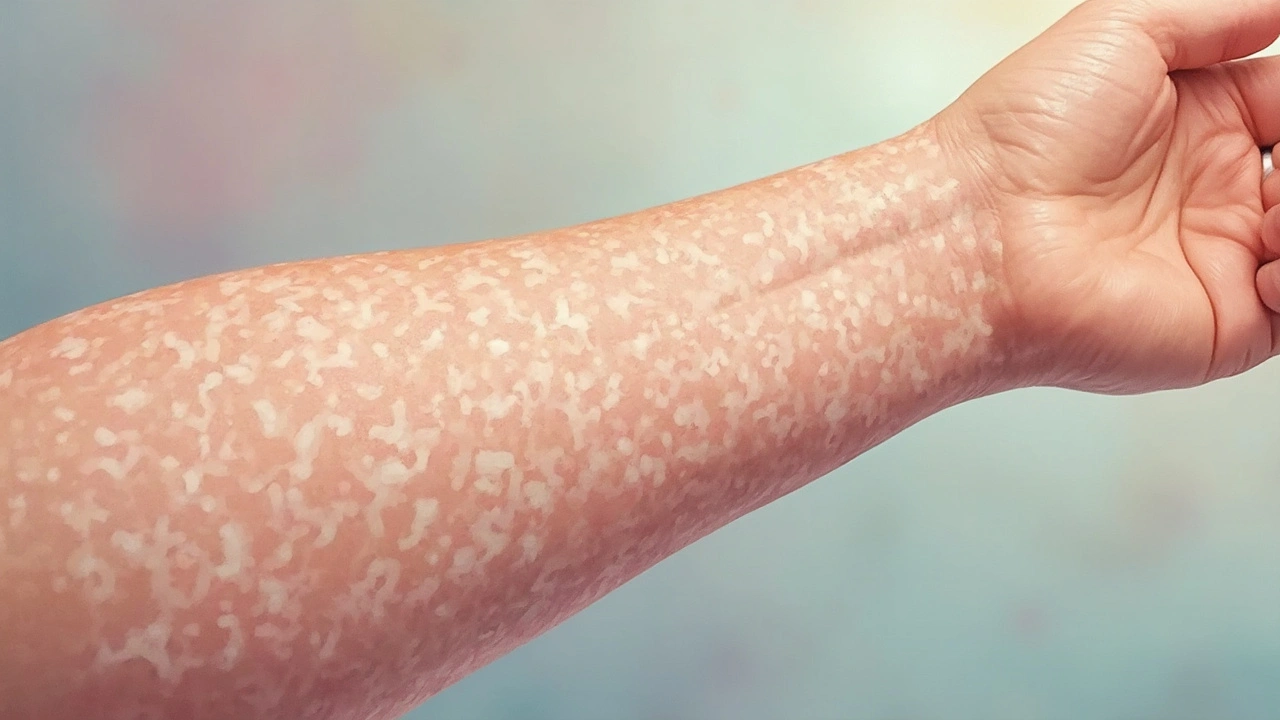Mottled Skin: What It Is and Why It Happens
Have you ever noticed patchy, uneven skin that looks blotchy or has irregular discoloration? That’s often what we call mottled skin. It can show up as a mix of colors on your skin, like red, purple, or pale patches mixed together, giving a ‘speckled’ effect. Sometimes it’s just a cosmetic nuisance, but other times it can signal something more serious happening inside your body.
Mottled skin usually means there’s irregular blood flow underneath your skin’s surface. When blood vessels constrict or expand suddenly, your skin can get that patchy look. It can happen because of cold exposure, poor circulation, or certain medical conditions. For example, when your body is cold, your blood vessels tighten to save heat, which might cause that blotchy skin pattern.
Common Causes of Mottled Skin
Several things might set off mottled skin. Exposure to chilly temperatures is a classic cause—your body shunts blood away from your skin to keep your core warm. Emotional stress or anxiety can also trigger it by messing with your blood flow. People with circulatory problems like Raynaud’s disease often notice that mottled effect.
Other causes include some infections, reactions to medications, or underlying health issues such as heart or lung problems. Mottled skin might even pop up after intense physical activity or during fever. Sometimes, it signals low oxygen levels in the blood, so if you see it along with shortness of breath or chest pain, it’s a good idea to see a doctor ASAP.
How to Recognize and Manage Mottled Skin
Spotting mottled skin is usually straightforward—it looks like uneven patches that don’t match your normal skin tone. It might feel cool or clammy. If it comes and goes quickly, often linked to cold or stress, it might not be serious. But persistent mottling that gets worse or is accompanied by other symptoms needs attention.
To manage mild cases, keeping warm and avoiding triggers like cold drafts helps. Wearing layers and using moisturizers can protect sensitive skin. For those with underlying conditions, treating the root cause is key. For instance, improving circulation through gentle exercise or managing stress can reduce episodes. In cases linked to medication, talk to your healthcare provider about alternatives.
Remember, mottled skin is a visible clue. If it’s new, changing, or causing discomfort, don’t brush it off. A quick check-in with your doctor can help find out what’s going on and keep your skin—and your health—on track.
Mottled Skin Discoloration vs. Other Skin Conditions: Spotting the Difference
- Elliot Grove
- on Mar 10 2025
- 11 Comments
Skin changes can be puzzling. Mottled skin discoloration often stands out with its unique pattern, but telling it apart from other conditions requires a keen eye. This article unpacks the differences, diving into causes, symptoms, and when to seek help. Find practical tips to manage your skin health effectively. Learn what sets mottled skin apart from other conditions in a language that's easy to understand.

